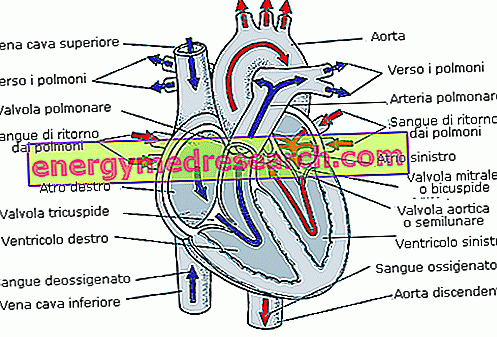Mitosis is conventionally divided into four periods, called prophase, metaphase, anaphase and telophase respectively. They are followed by the division into two daughter cells, called cytodieresis.
Prophase
In the nucleus, colorable filaments are seen to gradually emerge, still elongated and wrapped in a ball. The gradual spiraling of the DNA strands bound to nuclear proteins thus gradually identifies the chromosomes. Meanwhile the nucleolus disappears, while the centriole splits. The two centrioles migrate to the opposite poles of the nucleus, while the dissolution of the nuclear membrane begins. At the time of transition from prophase to metaphase (when some identify separately as prometaphase) the chromosomes are shortened and clearly visible, no longer isolated in the nuclear membrane; the centrioles are at opposite poles, with a spindle of microtubules that connects them to meridian fashions: the nucleolus has dissolved. The spindle that connects the centrioles, called the achromatic spindle because it cannot be colored (unlike the chromosomes), includes both continuous fibers (fibers of the spindle) and fibers that in their middle point connect to the centromeres of the chromosomes (chromosomal fibers).

Metaphase
In the metaphase the melt is clearly distinguished, with all the chromosomes placed on the equatorial plane, called the equatorial plate. At this moment the chromosomes are at the maximum of shortening. This is the moment when the cell is fixed to count and identify the chromosomes. Each chromosome is clearly composed of two equal filaments (chromatids), held together at a point called the centromere (the two chromatids are the result of reduplication). The centromere is the only point of contact, as a kind of adhesion between two platelets. All the centromeres are fixed to the central point of the chromosomal fibers of the achromatic spindle (this is why the chromosomes are in equatorial position).
Anafase
At the end of the metaphase we note that each centromere splits, with each half migrating along the spindle towards the respective pole. At this point the chromatids, dragged by their respective centromeres, are clearly separated into two groups: each chromatidium thus separated is, so to speak, become of age: from now on it is a chromosome intended for the respective daughter cell.
Telophase
The chromosomes separated into two equal clusters return to despiralize, reconstituting the nucleus of two new cells; the achromatic melt dissolves.
cytokinesis
Also the cytoplasm is divided by gradual throttling, attributing to the two daughter cells the respective proportions of both volume and cellular organelles. In particular, each daughter cell must receive at least one mitochondria, as a centriole has received (it is, as mentioned, structures with their own genetic continuity).
It should be noted that in the plant kingdom, although the general features of mitosis are respected, there are some differences. First of all the centrioles are lacking: at the poles of the spindle there are optically empty spaces, called centrosomes, from which the microtubules radiate. Furthermore, at the time of the cytodieresis, in which every daughter cell must also be given the attribution of a plastid (due to its genetic continuity), the separation of the daughter cells occurs not by choking but by the formation of a septum, first only of plasmalemma, then with subsequent interposition of the cell wall.
The genetic foundation is represented by the alternation between a doubling of the genetic material (DNA reduplication, that is, doubling of each chromosome into two equal chromatids, joined through the centromeres), and a halving (separation of the centromeres, migration of the two chromatids in the opposite direction). to constitute the two new equal nuclei).
Since, as we will see, the chromosomes are present in pairs of homologues (coming respectively from the gametes), we see that immediately after the division the number of chromosomal filaments is one pair for each type of chromosome. Calling n the number of different types of chromosome characteristic of the single species, the normal chromosome set after mitosis is of n pairs of homologous chromosomes (2n chromosomes = diploid cell).
However, after phase S, each chromosome will be doubled. In fact, in order to give each daughter cell 2n chromosomes it is necessary to have 4n chromatids. In this way we see that reduplication and mitosis alternately give 4n and 2n strands of DNA.
Edited by: Lorenzo Boscariol



